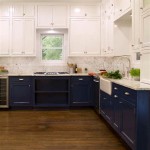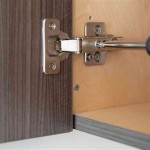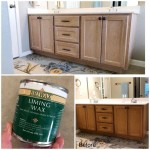Lime Waxing Kitchen Cabinets: A Guide to Achieving a Distinctive Finish
Lime waxing is a unique and increasingly popular technique for finishing kitchen cabinets. It offers a beautiful, aged, and slightly rustic aesthetic, often favored for its ability to enhance the natural grain of wood and provide a durable protective layer. This article explores the process of lime waxing, its key benefits, and considerations to make for a successful outcome.
Understanding Lime Wax
Lime wax is a type of wax-based finish containing finely ground lime. The lime component reacts with the wood, creating a unique chalky, slightly textured finish. This finish offers a subtle, matte appearance, often described as "shabby chic" or "distressed." Lime wax is available in a variety of colors, allowing for customization and a wide range of aesthetic choices.
It's important to distinguish lime wax from traditional waxes and varnishes. While traditional waxes typically provide a protective barrier and enhance the natural sheen of wood, lime wax adds a distinctive, aged, and slightly uneven texture. This makes it ideal for achieving a specific aesthetic, particularly when seeking a vintage look.
Key Benefits of Lime Waxing Kitchen Cabinets
Lime waxing offers several advantages over traditional finishes, making it an attractive choice for kitchen cabinet projects.
1. Unique Aesthetic
The most notable benefit of lime waxing is its ability to create a distinctive, aged look. The lime component reacts with the wood, producing a slightly uneven, chalky finish. This creates a visual effect that can enhance the natural grain of the wood and add depth and character to the cabinets.
2. Durability
While lime wax is not as durable as some other finishes, it still provides a protective layer against moisture, scratches, and stains. The wax component creates a barrier that helps to repel spills and protect the wood's surface. Regular upkeep with a furniture polish can further enhance its longevity.
3. Easy Application
Lime wax is generally easy to apply, making it suitable for both professionals and DIY enthusiasts. It can be applied using a brush, cloth, or even a sponge. The wax typically dries within a few hours, allowing for multiple coats to be applied within a short period.
4. Versatile Options
Lime wax is available in a range of colors, allowing for customization to create a personalized look. From subtle shades to bolder hues, there are options to complement nearly any kitchen style.
Considerations for Lime Waxing
While lime waxing is a popular finishing technique, there are some considerations to keep in mind before embarking on the project:
1. Surface Preparation
Proper surface preparation is crucial. The wood must be thoroughly sanded and cleaned to ensure a smooth, even finish. Lime wax adheres best to bare wood, so any existing finishes need to be removed prior to applying the wax.
2. Color Selection
Choose a color that complements the existing kitchen decor and the overall design aesthetic. Consider the wood species and its grain, as well as the color scheme of the kitchen. Lime wax often produces a slightly lighter shade than the initial application, so test the color on a spare piece of wood before applying it to the cabinets.
3. Application Technique
Applying lime wax too thickly can lead to an uneven, messy finish. The key is to apply thin, even layers, allowing each layer to dry completely before adding the next. If the wax is too thick, use a clean cloth to remove excess product before it dries.
4. Maintenance
Lime waxed surfaces require regular maintenance to preserve their finish. Periodic cleaning with a mild soap and water solution is recommended. You can also apply a furniture polish to help protect the wax and enhance its shine.
Lime waxing kitchen cabinets presents an opportunity to create a unique and stylish look that complements a range of design preferences. By understanding the process, benefits, and considerations involved, homeowners and DIY enthusiasts can achieve a successful result that adds character and longevity to their kitchen spaces.

Limed Oak Cabinet Kitchens

Liming Wax On Oak Cabinets

Liming Wax On Oak Cabinets

Cerused French Oak Kitchens And Cabinets Kitchen Trend 2024 Petite Haus

Home Dzine Liming Indoor And Outdoor Wood

Limed Oak Cabinet Kitchens

How To Update Oak Cabinets With Briwax

Diy Lime Wax On Honey Oak Cabinets Home Remodeling

How To Get A Rustic Bleached Wood Finish House Mix

The Fresh Made Farmhouse On Instagram Here It Is I Can T Get Over How Much Rustic Kitchen Cabinets New
Related Posts








